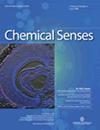Taste loss as a distinct symptom of COVID-19: a systematic review and meta-analysis
IF 1.9
4区 心理学
Q1 BEHAVIORAL SCIENCES
引用次数: 0
Abstract
Chemosensory scientists have been skeptical that reports of COVID-19 taste loss are genuine, in part because before COVID-19 taste loss was rare and often confused with smell loss. Therefore, to establish the predicted prevalence rate of taste loss in COVID-19 patients, we conducted a systematic review and meta-analysis of 376 papers published in 2020–2021, with 235 meeting all inclusion criteria. Drawing on previous studies and guided by early meta-analyses, we explored how methodological differences (direct vs. self-report measures) may affect these estimates. We hypothesized that direct measures of taste are at least as sensitive as those obtained by self-report and that the preponderance of evidence confirms taste loss is a symptom of COVID-19. The meta-analysis showed that, among 138,015 COVID-19-positive patients, 36.62% reported taste dysfunction (95% confidence interval: 33.02%–40.39%), and the prevalence estimates were slightly but not significantly higher from studies using direct (n = 15) versus self-report (n = 220) methodologies (Q = 1.73, df = 1, P = 0.1889). Generally, males reported lower rates of taste loss than did females, and taste loss was highest among middle-aged adults. Thus, taste loss is likely a bona fide symptom of COVID-19, meriting further research into the most appropriate direct methods to measure it and its underlying mechanisms.作为 COVID-19 明显症状的味觉丧失:系统回顾和荟萃分析
化感科学家一直怀疑有关 COVID-19 味觉丧失的报道是否属实,部分原因是在 COVID-19 之前,味觉丧失并不多见,而且经常与嗅觉丧失混淆。因此,为了确定 COVID-19 患者味觉丧失的预测患病率,我们对 2020-2021 年间发表的 376 篇论文进行了系统回顾和荟萃分析,其中 235 篇符合所有纳入标准。借鉴以往的研究并以早期的荟萃分析为指导,我们探讨了方法学上的差异(直接测量与自我报告测量)会如何影响这些估计值。我们假设,直接测量味觉的方法至少与通过自我报告获得的方法同样敏感,而且大量证据证实味觉丧失是 COVID-19 的一种症状。荟萃分析表明,在 138,015 名 COVID-19 阳性患者中,36.62% 的患者报告有味觉功能障碍(95% 置信区间:33.02%-40.39%),采用直接法(n = 15)与自我报告法(n = 220)的研究得出的患病率估计值略高,但并无显著差异(Q = 1.73,df = 1,P = 0.1889)。一般来说,男性报告的味觉丧失率低于女性,中年人的味觉丧失率最高。因此,味觉丧失很可能是 COVID-19 的真正症状,值得进一步研究最合适的直接测量方法及其内在机制。
本文章由计算机程序翻译,如有差异,请以英文原文为准。
求助全文
约1分钟内获得全文
求助全文
来源期刊

Chemical Senses
医学-行为科学
CiteScore
8.60
自引率
2.90%
发文量
25
审稿时长
1 months
期刊介绍:
Chemical Senses publishes original research and review papers on all aspects of chemoreception in both humans and animals. An important part of the journal''s coverage is devoted to techniques and the development and application of new methods for investigating chemoreception and chemosensory structures.
 求助内容:
求助内容: 应助结果提醒方式:
应助结果提醒方式:


